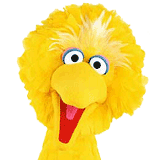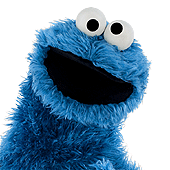cjd874
Well-Known Member
- Joined
- Nov 13, 2012
- Messages
- 2,127
- Reaction score
- 2,345
I agree with you completely. Ernie looked pretty dopey, Bert was too angry-looking, the Anything Muppets weren't really...anything, and you needed sunglasses to look at bright orange Oscar. And don't even get me started on the ragtag, hick-like Big Bird. I wonder if he got involved with certain 1960s countercultural practices before SS?That said, first season characters are ugly! The AM's didn't have the sophisticated placement of the eyes half the time, Orange Oscar, color aside, was an ugly looking guy, Ernie and Bert didn't look as expressive, and Bullwinkle Big Bird was just awful. Carol was right to change the character.

But what I really think put the ugliness over the top were the monsters. Think about Beautiful Day Monster, the Snerfs, Fuzzyface, and the pre-Cookie Monster, whom I shall now call "Floppyface" whenever referring to the original puppet. Not to mention there was also Scudge, Splurge, and Fred the Dragon! Yikes!
Personally, I don't think the Muppets' look was really polished until around Season 5-6, once Snuffleupagus and the Count became regulars on the Street. Remember how Snuffy first looked? He was even more terrifying than the first Big Bird! The voice didn't help, either...he sounded like a stoned Eeyore. "Heeeeelllllloooooooo, Biiiiiiirrrrrddddd..." Thankfully Jerry kind of changed the voice, and then Marty Robinson took over. I really like Marty's voice better...it's more upbeat and versatile.
On a different topic, was it really Caroll's decision to change the character, or did the writers do it? I know that the premise was a visit to a day-care center or something like that, and Caroll ended up performing the Bird as a six-year old instead of a goofy, dimwitted adult.

 Welcome to the Muppet Central Forum!
Welcome to the Muppet Central Forum!.jpg) Christmas Music
Christmas Music Macy's Thanksgiving Parade
Macy's Thanksgiving Parade Sesame Street debuts on Netflix
Sesame Street debuts on Netflix Back to the Rock Season 2
Back to the Rock Season 2 Sam and Friends Book
Sam and Friends Book Jim Henson Idea Man
Jim Henson Idea Man Bear arrives on Disney+
Bear arrives on Disney+